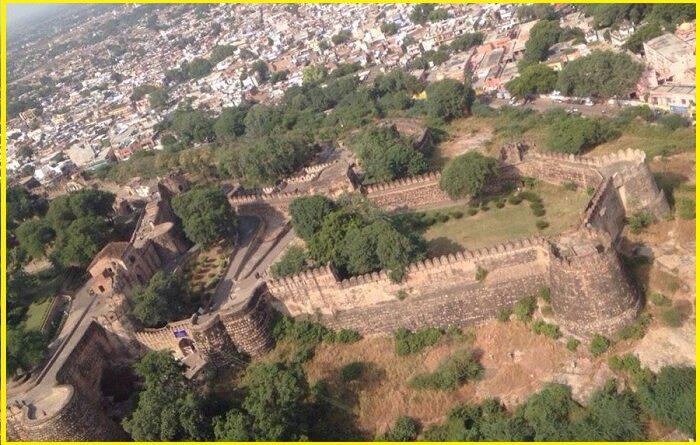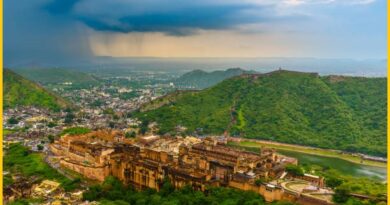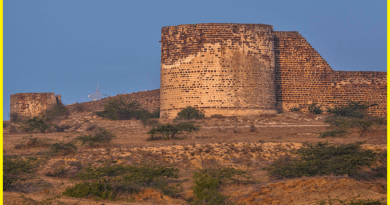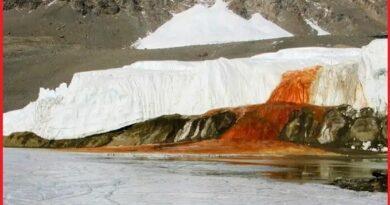An Epitome of Bravery of Rani Laxmi Bai-“The Jhansi Fort”
Jhansi Fort
Jhansi Fort or Jhansi ka Kila is an ancient and historical fortress situated in Jhansi city, Uttar Pradesh, Atop Bangira hill in the town of Balwantnagar (Jhansi). The Fort was built by Raja Bir Singh Deo (Bundela king) of Orchha in 1613 CE. Sprawling over an area of 15 acres, the fort is built in the north Indian style of architecture. The Jhansi fort is a living testimony of ancient glamor and has a fine collection of sculptures that provide an excellent insight into the eventful history of Bundelkhand. The monumental structure has thick granite walls and several bastions with mounted cannons, measuring about 225 meters in width and 312 meters in length. A mammoth wall was constructed, surrounded by the moat on either side, along with 22 other supports to strengthen the fort.
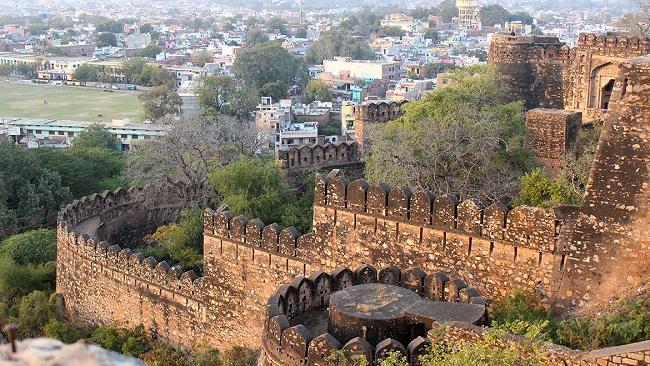
History of Jhansi Fort
In the 18th century, Jhansi served as the capital of Maratha province and later the Princely State of Jhansi from 1804 to 1853 CE. The fort was the residence of the great Rani Lakshmi Bai of Jhansi, who fought the British East India Company during the 1857 War of Independence. This fort has been a witness to the fiery battle led by Rani Lakshmi Bai, During the mutiny. Her army fought fiercely for two weeks. The wall of the fort used to surround the entire city of Jhansi and had ten gates- Some of these are Khandero Gate, Datia Darwaza, Unnao gate, Jharna Gate, Laxmi Gate, Sagar Gate, Orcha Gate, Sainyar Gate, and Chand Gate. The places of interest within the main fort area are the Karak Bijli Tank, Rani Jhansi Garden, Shiv temple, and a “Mazar” of Ghulam Gaus Khan, Moti Bai, and Khuda Baksh. There are temples of Lord Shiva and Lord Ganesha within the fort. Ganesh Mandir is the place where Rani Lakshmi Bai married Raja Gangadhar Rao and then she used to worship regularly. Karak Bijli is a lion-headed canon measuring 5.5 meters by 1.8 meters and was operated by Ghulam Gauz, one of the faithful soldiers of Rani’s army. There is also the Bhawani Shankar cannon which was handled by the legendary Moti Bai woman gunner. The Fort also houses the Panch Mahal, where Rani Lakshmi Bai lived with her husband Raja Gangadhar Rao until his death. In the fort premises, People can also see the Jumping Spot, from where Rani Lakshmi Bai fled with her son on the horseback when British army surrounded the Fort of Jhansi.
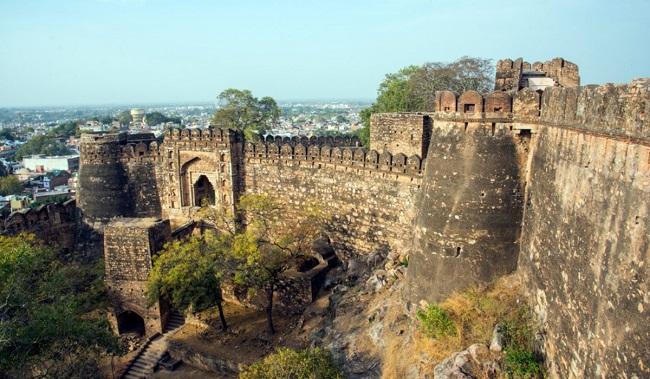
Other Tourist Attraction near Jhansi
Several other tourist attractions are located in close proximity to Jhansi Fort. These include the Rani mahal, Baruasagar fort, and Garhmau lake along with the Orcha village with its serene ambiance.
Rani Mahal
The Queen’s Palace or Rani Mahal was constructed by Raghunath II Newalkar. This was the home of the Rani of Jhansi and has now been converted into a museum. It displays a collection of archaeological remains from the period between the 9th and 12th centuries AD. The magnificent Durbar Hall of the palace is the grandeur of the Rani mahal. The ground floor of the palace houses stone sculptures collected from Madanpur, Barua Sagar, Dudhai, and Chandpur dating from Gupta to the Medieval period.
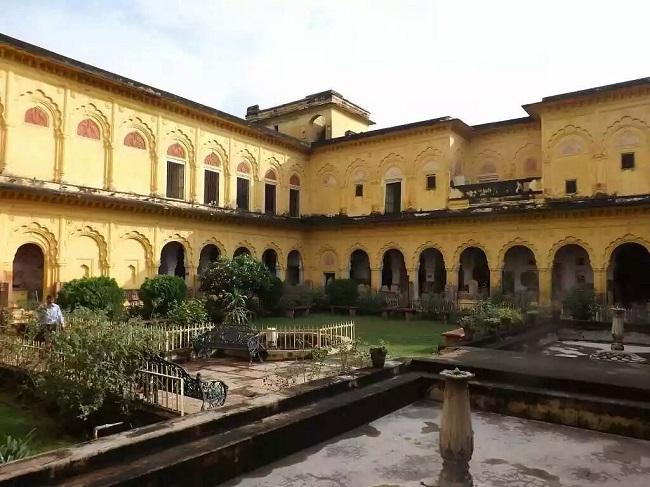
Baruasagar Fort
Baruasagar is a heroic town where the Marathas fought the Bundelas in 1744. The place is named after the Barua Sagar Tal, a large lake created about 260 years ago when Raja Udit Singh of Orchha built the embankment. This fort, picturesquely located at a height, has an excellent view of the lake and surrounding landscape. The place is the beautiful shrine of Lord Shiva and Goddess Parvati. The built-in red stone in a panchyatana style, four subsidiary shrines surround the temple at all four corners. The town is situated on the road to Chatarpur nearly 10 km from Jhansi.
Garhmau Lake, Jhansi
Amidst the history and heritage, Garhmau Lake is a beautiful natural tourist destination in Jhansi. Garhmau Lake sprawls over a large area of 14 km. The pleasant environment of this place makes Garhmau Lake an ideal sightseeing place in Jhansi for picnics and day outings. The views of sunrise and sunset are amazing in this popular tourist attraction.
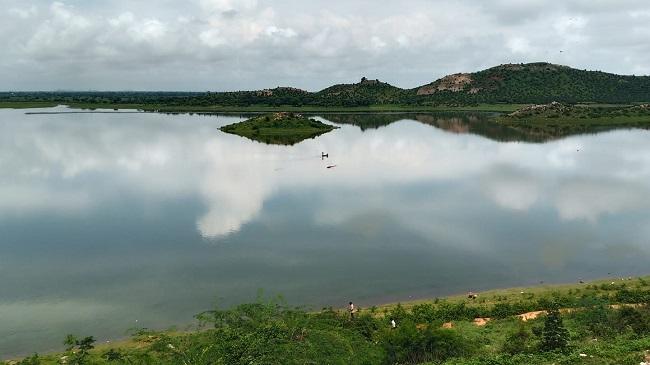
ORCHHA
The town of Orchha is considered to be Madhya Pradesh’s big attraction, situated at the bank of the Betwa river, it is graced with medieval-style architecture dating from the start of the 16th century. it was Established as the capital of Bundelkhand by Rudra Pratap Singh, a Bundela chief in 1501 A.D., Orchha carries the imprints of all former rulers, who ruled the city at different time periods. The area around it is full of chances to explore the palaces and temples, or there are some beautiful gardens like Phool Bagh, within easy reach. The Orchha town is a less crowded region its air and water are relatively clear, and as a result, it is an ideal place to take a break from a busy schedule.
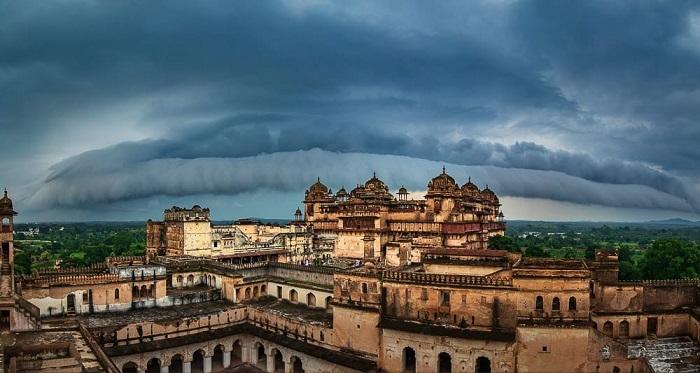
Sound and Light Show
A Sound & Light Show is held every evening on the fort premises. The show depicts various facets of the history of Jhansi and encapsulates the events that took place during the First War of Indian Independence, 1857, and the life of Rani Lakshmi Bai. The Sound & Light Show is given in both Hindi and English language. The visiting time of the fort is 6 AM to 6.30 PM.
Best Time to Visit Jhansi Kila
The winter season from October to February is the best time to visit Jhansi. The weather in winter remains calm and cold, making it pleasurable to explore the city. Jhansi festival is the best celebration time for Jhansi which is held in February every year.
Also, read- Pearl of Fortresses that Perched on a rocky outcrop-The Gwalior Fort
How to Reach Jhansi Fort
Jhansi Fort is located 3 km away from Jhansi railway station. Jhansi Junction is well connected with all major cities in India via trains. Gwalior is the closest airport to Jhansi. It is located 103 km from Jhansi. from Gwalior you can take a bus to reach Jhansi.
